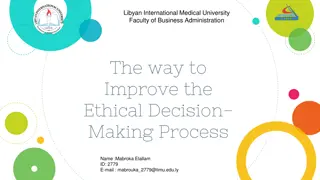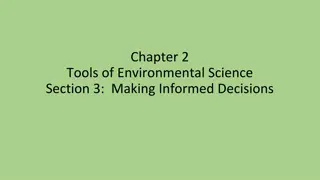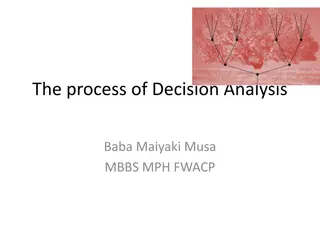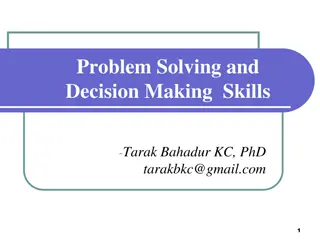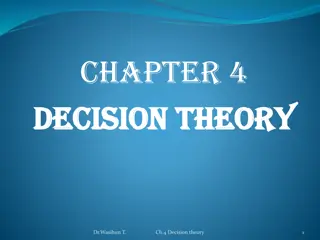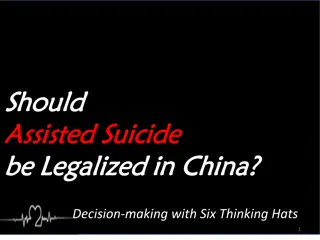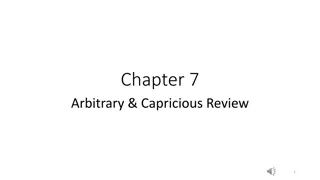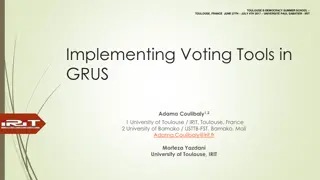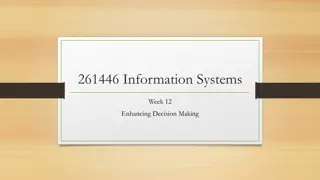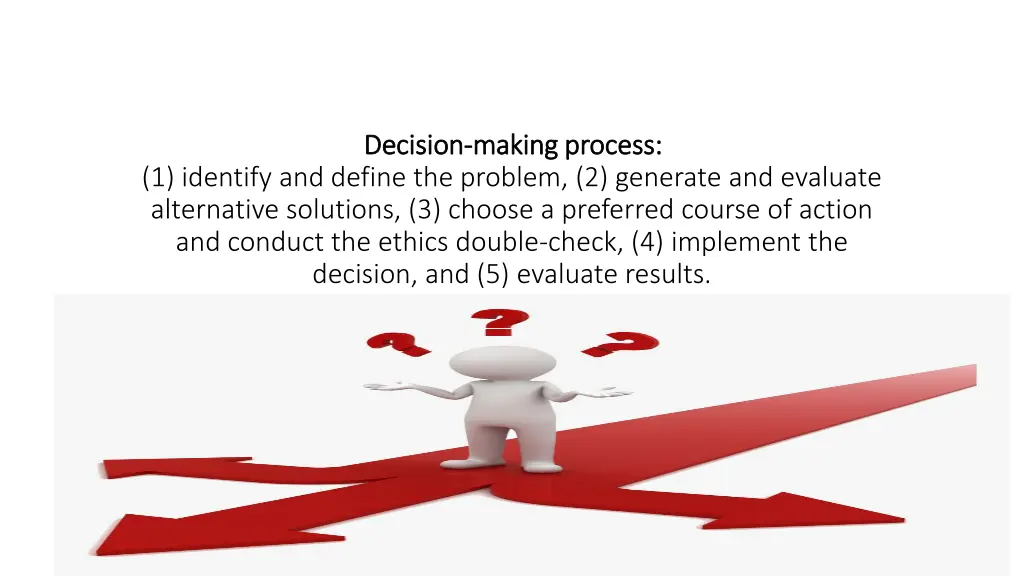
Effective Decision-Making Process: Steps and Ethical Considerations
Learn about the decision-making process, from identifying and defining the problem to evaluating results. Discover criteria for evaluating alternatives and ethical decision-making practices. Follow these steps to make sound decisions and assess outcomes effectively.
Download Presentation

Please find below an Image/Link to download the presentation.
The content on the website is provided AS IS for your information and personal use only. It may not be sold, licensed, or shared on other websites without obtaining consent from the author. If you encounter any issues during the download, it is possible that the publisher has removed the file from their server.
You are allowed to download the files provided on this website for personal or commercial use, subject to the condition that they are used lawfully. All files are the property of their respective owners.
The content on the website is provided AS IS for your information and personal use only. It may not be sold, licensed, or shared on other websites without obtaining consent from the author.
E N D
Presentation Transcript
Decision Decision- -making process: making process: (1) identify and define the problem, (2) generate and evaluate alternative solutions, (3) choose a preferred course of action and conduct the ethics double-check, (4) implement the decision, and (5) evaluate results.
STEP 1 -IDENTIFY AND DEFINE THE PROBLEM The first step in decision-making is to find and define the problem. Gathering information and thinking about the problem are critical in this stage. The more specific the goals, the easier it is to evaluate results
STEP 2-GENERATE AND EVALUATE ALTERNATIVE SOLUTIONS Once the problem is defined, it is time to assemble the facts and information that will be help in problem-solving. Extensive information gathering should identify alternative courses of action, as well as their anticipated consequences A useful approach for the evaluation of alternatives is a cost-benefit analysis. This involves comparing the costs and benefits of each potential course of action. The benefits of an alternative should be greater than its costs
Criteria for evaluating alternatives Cost Benefit Timeliness Ethics Acceptability
Step 3- Choose a preferred course of action. Choose the best possible solution. Step 4-Implement the Decision Managers not only need the determination and creativity to arrive at a decision but also to implement it.
Step 5-Evalute Results The decision-making process is not complete until results are evaluated. If the desired results are not achieved or if undesired side effects occur, corrective action should be taken. Such evaluation is a form of managerial control. It involves gathering data to measure performance results and compare them against goals. If the results are less than what was desired, it is time try alternative course of action.
ETHICAL DECISION MAKING Use the spotlight questions to ensure that the ethical aspects of a problem are properly considered Spotlight Question 1: How would I feel if my family found out about this decision? Spotlight Question 2: How would I feel if this decision were published in the local newspaper or on the Internet? Spotlight Question 3: Think of the person you know or know of (in real life or fiction) who has the strongest character and best ethical judgement. Then ask yourself what would that person do in your situation?


